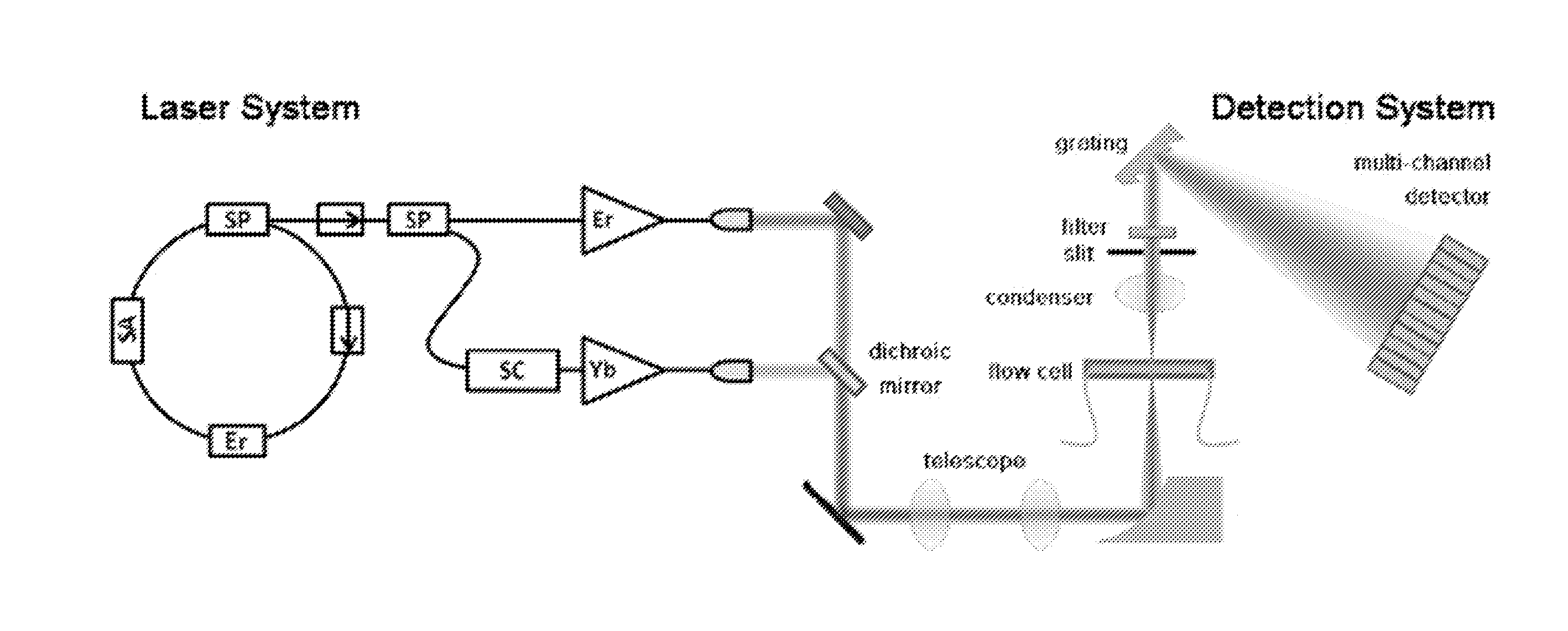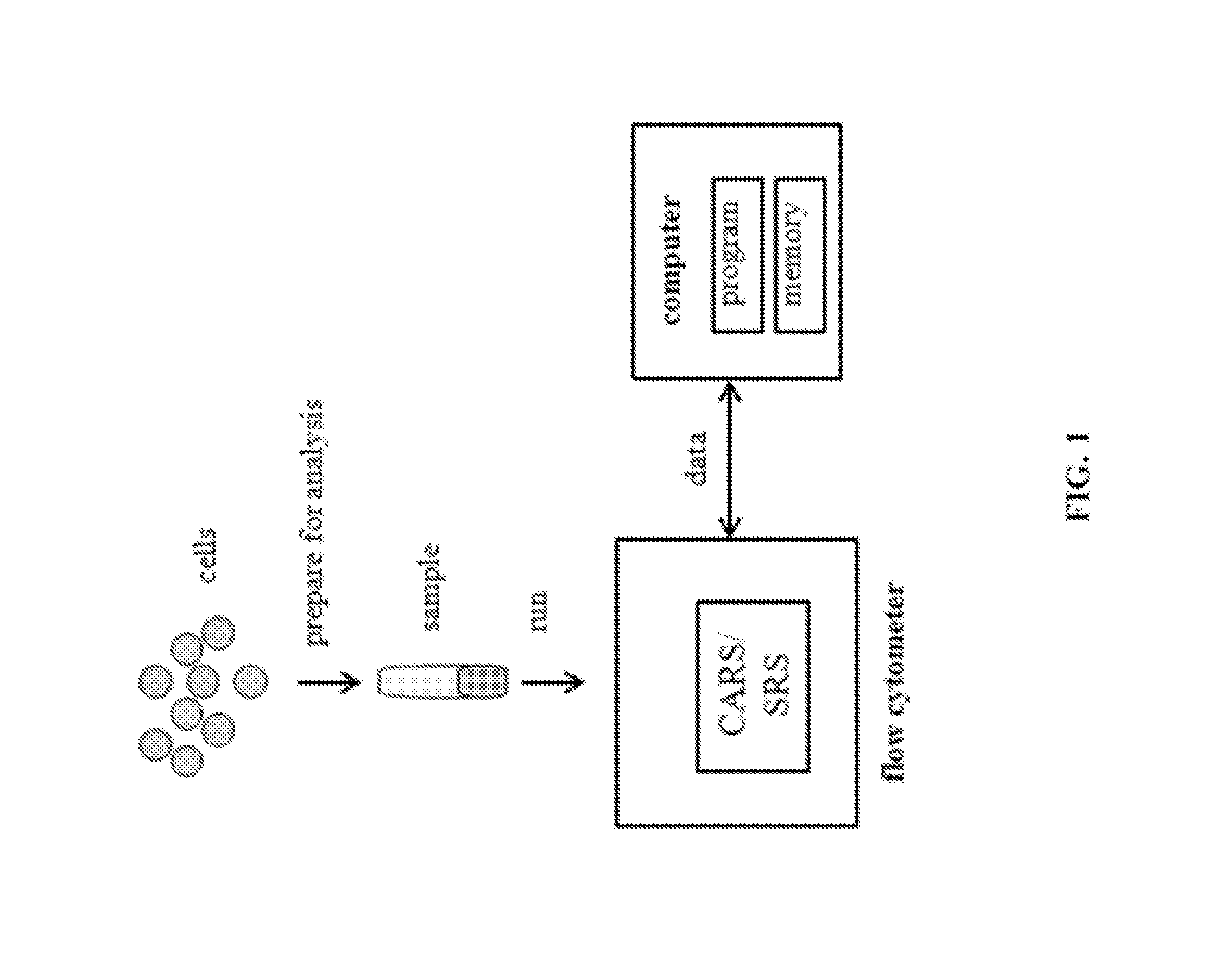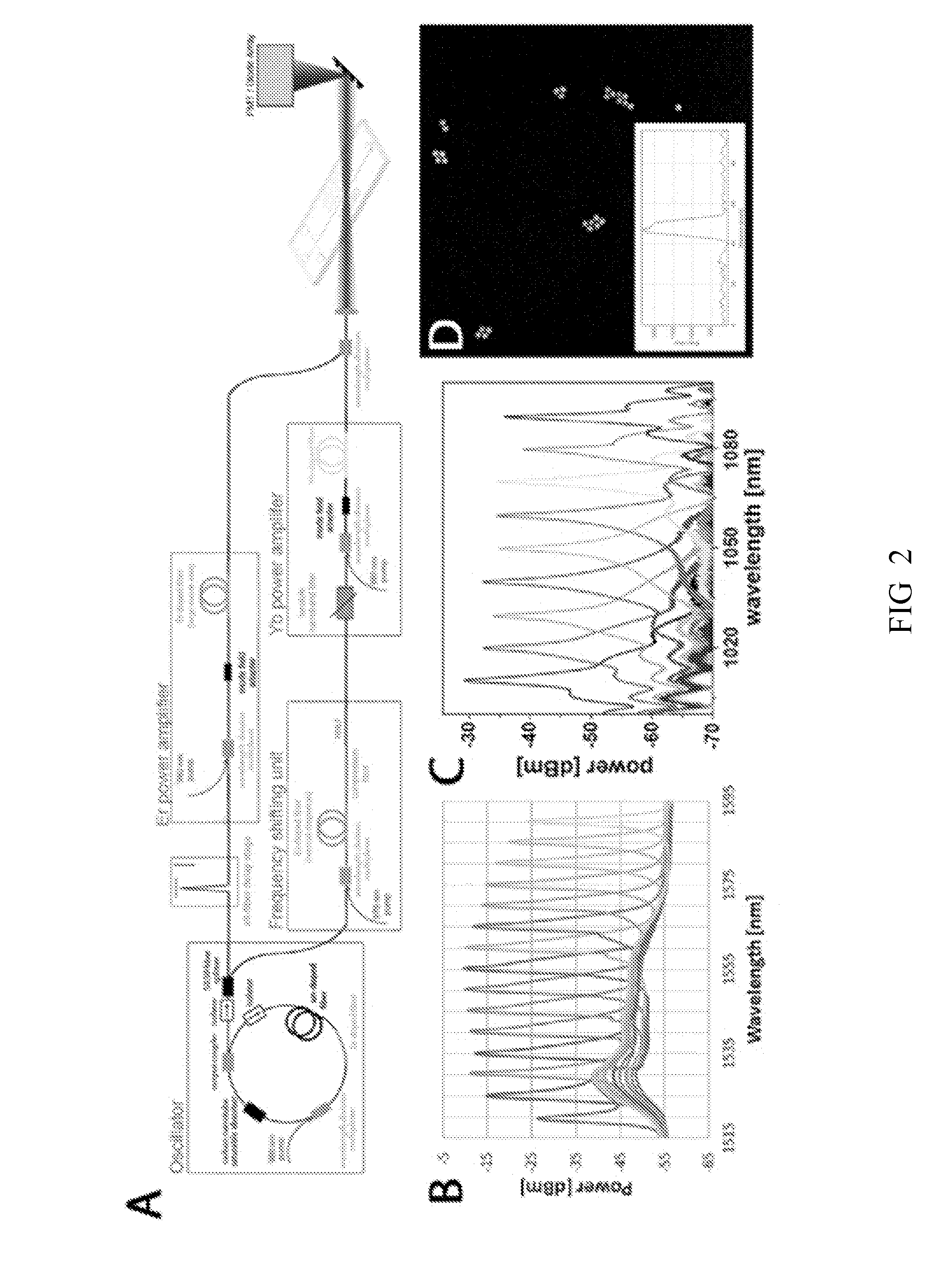Methods and systems for coherent raman scattering
a coherent and raman scattering technology, applied in the field of coherent raman scattering methods and systems, can solve the problems of weak spontaneous raman scattering signal, impracticality of current spontaneous raman scattering system for cell sorting, long averaging time, etc., and achieve the effect of reducing the background signal and reducing the laser cavity repetition ra
- Summary
- Abstract
- Description
- Claims
- Application Information
AI Technical Summary
Benefits of technology
Problems solved by technology
Method used
Image
Examples
example 1
A CRS Flow Cytometer
[0169]This example includes building and characterizing the laser source for the high-throughput CRS-based cell sorter, building the detection system, and demonstrating the performance of the complete system which includes the laser source, CRS-based cell sorter and the detection system. This example includes an all-fiber laser source for a high throughput multiplexed CRS flow cytometer. A dual-wavelength laser platform (e.g., FIG. 2A) can be used for optical synchronization of Er- and Yb-doped power amplifiers, which may have a difference in center wavelengths that might allow access to the high wavenumber region (2750 cm−1 to 3400 cm−1) of Raman spectra where most of CRS can be performed. Accessing the fingerprint region of Raman spectra may also be possible (e.g., by utilizing Thulium (Tm) and Holmium (Ho) co-doped amplifiers).
[0170]The laser illumination system (1) and the detection system (2) can be arranged for CRS applications. For the flow system (2), cus...
example 2
CRS Flow Cytometry—Spectral Calibration
[0186]This example describes a protocol for spectral calibration for systems and methods of the present invention. For example, the calibration protocol can be used for calibrating a CRS flow cytometer system described herein. Example calibration protocols are described below.
[0187]FIGS. 6A & 6B show the spectra of the excitation lasers for multiplex CRS. In some aspects of the present invention, the bandwidth of the Stokes beam can be generated by spectral broadening of a femtosecond input beam due to SPM during amplification. SPM may result in a non-uniform spectral coverage (IStokes(λ)≠const.). A strong signal in the wings can be desirable as the SPM-broadened output is usually chirped (e.g., different wavelengths are present in the focus at different times). The narrowband beam can be unchirped and can be close to Gaussian. To maximize the signal and minimize sample damage, it may be desirable to match the pulse duration of the two excitati...
example 3
CRS Flow Cytometry—Prototype System & Results
[0195]A prototype system was designed and developed to demonstrate proof-of-concept for a high-speed Raman spectroscopy platform based on multiplex CRS. While spontaneous Raman scattering is highly specific and allows for single-cell measurements, the major disadvantage is that the signal is extremely weak and long averaging times are required to obtain high signal-to-noise ratio (SNR) spectra (e.g., 10 seconds per cell). This renders a spontaneous Raman scattering-based flow cytometer or cell sorter impractical. In CRS, the sample is excited with two laser beams with a difference frequency tuned to match a particular vibration of the sample. Such coherent excitation of a targeted vibration results in a large increase in signal, by >10,000× compared spontaneous Raman scattering.
[0196]Most implementations of CRS microscopy have been based on narrowband CRS using two narrowband lasers to target a particular Raman vibration; different Raman ...
PUM
 Login to View More
Login to View More Abstract
Description
Claims
Application Information
 Login to View More
Login to View More - R&D
- Intellectual Property
- Life Sciences
- Materials
- Tech Scout
- Unparalleled Data Quality
- Higher Quality Content
- 60% Fewer Hallucinations
Browse by: Latest US Patents, China's latest patents, Technical Efficacy Thesaurus, Application Domain, Technology Topic, Popular Technical Reports.
© 2025 PatSnap. All rights reserved.Legal|Privacy policy|Modern Slavery Act Transparency Statement|Sitemap|About US| Contact US: help@patsnap.com



